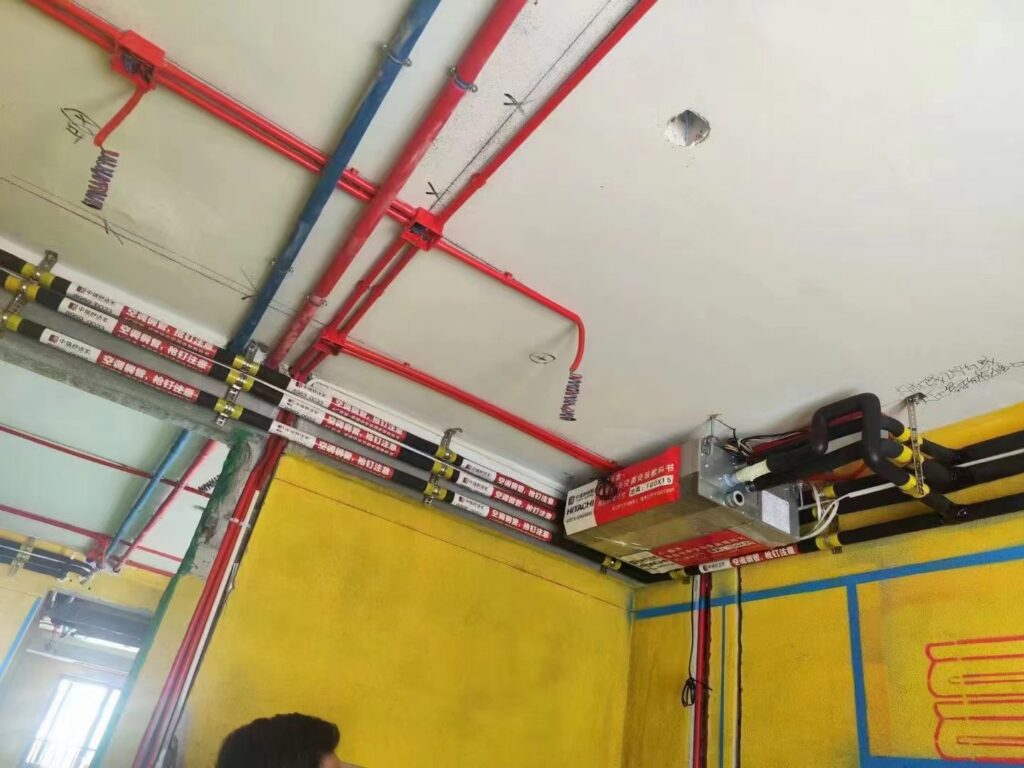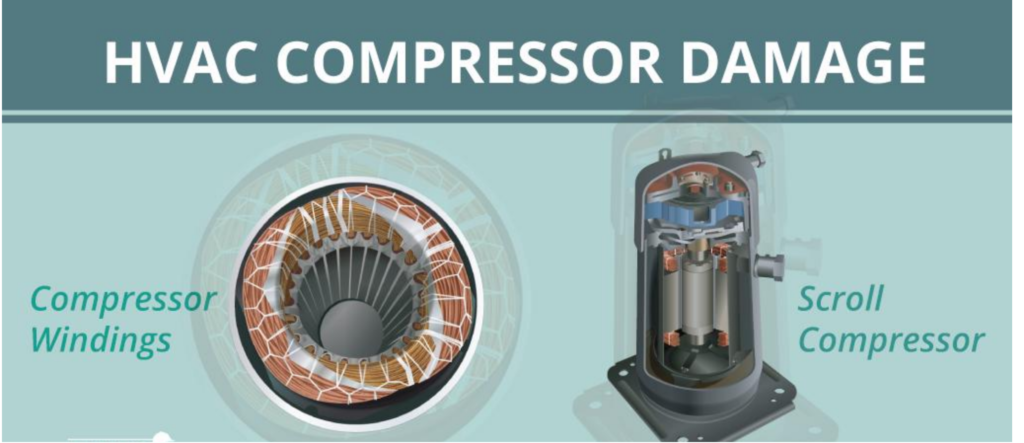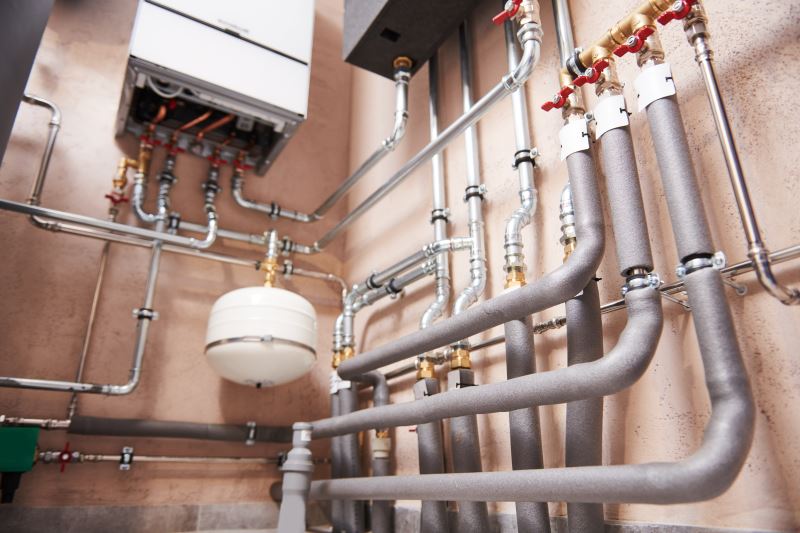1. Introduction
Before moving to repair the HVAC system, it’s essential to understand the basic meaning of the HVAC system. It refers to heating, ventilation, and air conditioning. This system maintains and moves cooled and heated air to all commercial and residential buildings. Yet, this system also holds the humidity level and improves air quality by air cleaners.
This air cleaner traps the virus spores and bacteria-sized particles. Although there are various choices regarding the HVAC system, all work in the same way. It takes in the fresh air and applies the mechanical ventilation system to cold or heat it according to the needed temperature.

2. How Does an HVAC System Work?
There are three primary purposes of an HVAC system. These are interconnected with each other, particularly when it comes to producing comfortable temperatures and appropriate indoor air quality. Even though your home’s heating and cooling system is one of the most intricate and expensive, you will notice when it breaks down.
Before HVAC system repair, it’s vital to understand the parts of Your HVAC system. These have nine components;
- exhaust outlets
- compressor
- electrical elements
- ducts, blower
- outdoor unit
- filter
- air return
- coils
3. How to Repair the HVAC System?
For repairing the HVAC system, we need some crucial tools.
Tools
- · Flashlight
- · Shop vacuum
- · Kitchen lighter
- · Cordless drill
- · Screwdriver
Read out some critical problems with their solution, such as the failure of the HVAC system.
3.1 Leakage of AC Refrigerant

AC refrigerant is also called a Freon. It is responsible for air cooling within your AC system. Yet, this chemical absorbs heat from our homes and rejects the outer unit heat. Yet, it delivers the cool air back into the engaged area.
The leakage of AC refrigerant is one of the common issues in AC. Yet, it decreases the working of air conditioners. Furthermore, its leakage is also harmful to the external environment.
A refrigerant leak is one of the typical AC unit problems. It reduces your air conditioner’s efficiency. Moreover, leaks can also damage the immediate environment.
Refrigerant leak signs
• Unusual increases in cooling costs. The unit will have to work harder and longer to reduce the temperature in your house if there is insufficient refrigerant.
• The air that enters from vents is not cool. The cooling ability of the HVAC system is lost without refrigerant. The air may circulate the house, and you may hear the unit working. But it won’t be cool enough to make your room comfortable.
• A rise in interior humidity: Low refrigerant levels prevent the indoor coil from cooling enough to remove moisture from the air, raising indoor humidity levels.
• The outside appliance hisses: If your appliance hisses or releases air, the system may leak.
Solution
If there is a small leak, fill off the refrigerant and do a quick repair. A significant pipe defect may need the replacement of the entire network. Be careful to charge the refrigerant appropriately when recharging it. If the refrigerant charge complies with the manufacturer’s guidelines, your air conditioner will continue operating efficiently.
3.2 Damage Compressor

The compressor aids refrigerants in executing heat transfer and controls the AC pressure. Yet, it is one of the essential AC parts. Failure of the AC compressor caused by
- · dirty coils
- · Changes in refrigerant levels
- · and a lack of lubrication.
Insufficient refrigerant will cause the compressor to heat up and malfunction. The supplementary refrigerant will enhance the pressure inside the appliance. This will which could cause it to malfunction.
Solution
A compressor issue is caused if your air conditioner is not cooling or finds a poor HVAC flow. Contact your regional air conditioning expert to fix this typical AC issue. If there is massive damage, replace the compressor instead of doing the air conditioning repairs.
3.3 Dirty Heat Pump or Condenser
Outside air conditioners and heat pumps are susceptible to significant damage. This will make the system work harder to produce the desired warm and cold air in the room.
Solution
Cleaning the condenser and heat pump reduces the chance of any interior parts being damaged. Ensure your external air-conditioning pumps and units are dirt-free on the top and sides.
Use your garden hose to clean the fins, reaching all the nooks and removing all the dirt.
Additionally, confirm that your unit is level. The refrigerants, which are crucial to the efficient operation of your air conditioner, will be unbalanced if present. Your compressor and condenser may be more susceptible to failure.
3.4 Frozen Evaporator Coil

An evaporator coil that is frozen may be at fault for your air conditioner’s failure to cool. It is an issue with residential air conditioning units. It happens when debris accumulation prevents your team from getting enough air to function.
Warm air cannot reach the refrigerant because of airflow restrictions caused by dirt that has formed on the coils. Any moisture on the rings will freeze if the refrigerant gets too cold in this situation.
The coil becomes wrapped in ice over time, which stops the refrigerant from the loop from absorbing the heat generated. This AC issue is a problem with your home’s efficient air cooling.
Solution
To find this issue, check the damage. Yet, then let the evaporator coil defrost. It would be done by not applying the unit or system. Make sure to turn off the power. The evaporator coil needs 24 hours to defrost. Yet, you fast the process by applying for a hairdryer.
However, be attentive not to extra heat the loop, which damages the coil. Yet, in case of moderate frost, keep your system running on the fan mods. It is due to the blower fan melting away the thaw without closing the system.
3.5 Dirty AC Filter

An air conditioner filter plays a significant part in keeping the airflow clean. It helps to avoid pollutants and dust. Yet, the clogged air filter reduces the flowing current, diminishing the proficiency of your cooling system. A dirty filter decreases the capacity of the framework to cool the air.
Solution
Check the filter if you detect that your air conditioner’s airflow is clogged up or stuffy. Try to clean the filter since it is messy and stops airflow. The pet owner should be extra careful about the air filters. Yet, they must alter the air filter more often due to pet fur.
During peak times when AC is used most of the time, you should clean your filter every two weeks and replace it every two months. You can monitor the condition of your system’s filters using smart AC controllers. When the air filter needs to be cleaned, they might send a warning.
3.6 Thermostat Malfunctioning

It is one of the significant issues with residential air conditioners. For instance, a defective thermostat is due to your air conditioner’s short cycling, and your environment feels warmer than usual.
Corrosion, dust buildup, or even a simple case of dead batteries could cause a significant problem. The thermostat’s performance might also be affected by loose screws or wires. Direct sunlight may affect your thermostat’s value if installed there. Incorrect calibration of your thermostat is another potential cause of failure.
Solution:
Test the batteries in your battery-operated thermostat to ensure they are in good condition. Eliminate the cap and use a soft brush to clear any debris to stop dirt buildup.
Consult a professional if you see corrosion accumulation because trying to clean it yourself could result in further damage. Additionally, verify where your thermostat is located; it is suggested to put it in a room you use and transfer it to a shaded area.
Put a glass thermometer next to your thermostat and use it to test the calibration. Verify both devices’ readings after 15 minutes. It’s a period to set your thermostat if there is a contrast of more than one degree.
You can solve the issues with your old thermostat by converting it to a smart thermostat. You can change it to suit your tastes and manage it with your phone. Additionally, a smart thermostat lowers power bills.
3.7 Weak Airflow
There is an issue with the HVAC airflow if you find pressure imbalances or draughts in your home that are cold and hot. In this condition, the fan is incapable of pumping enough air. It is due to various elements, including a broken blower motor or a clogged air filter. Low refrigerant levels, blocked vents, and leaking ducts can contribute to this problem. It is a troublesome issue, especially during the sweltering summer.
Recalibrating a broken thermostat may fix it, if nothing else. Verify whether furniture or decorative objects obstruct the airflow to prevent vent obstruction. Push it aside to solve the issue. Always seek the help of an experienced specialist because it can be challenging to identify the precise cause.

3.8 Leaking Ducts
Ductwork is in charge of distributing the cold air throughout the home in the case of ducted air conditioners. However, if there is a hole or leak, it might impair the operation of your air conditioner. You feel your air conditioner was not on, even if it had been working for a while.
Due to the ductwork’s perforations’ ability to absorb dust and other impurities, seeping ducts can impact the air quality. Additionally, this extra material may block your home’s air filters. Yet, as a result, this causes inconsistent heating and cooling.
Solution:
You are inspecting the ductwork for tears and holes to identify this typical AC issue. If you cannot locate the spots, you can test for airflow via holes by turning on your air conditioner at max power. This method only works if your air conditioner is blowing air. Put your hand near the connections between the two ducts to feel for air leaks.
Use foil-faced tape to seal the leaks when you’ve located them. However, using tape isn’t a long-term fix; instead, use mastic air duct sealer. You put a sticky substance to the cracks and holes, and once it dries, it fixes.
4. HVAC Life Spans
The average life span of HVAC depends on the cooling and heating system type. It also depends on the climate condition. Yet, an HVAC system’s average lifespan is between 10 to 25 years. This lifespan time will automatically reduce.
- Over workload
- Lack of maintenance
- Unwanted airflow due to unsealed air leaks
- Insufficient insulation
Here are the typical life spans for standard HVAC equipment
- Boilers
Boiler life span is slightly longer than furnaces. The average life span of boilers is 20 to 35 years. Yet, the boilers also change due to leakage of the heat exchanger.

- Ductless Mini Splits
Like heat pumps, ductless mini splits can offer both cooling and heating. The typical life expectancy should be 0 to 30 years with proper maintenance. Yet, this life span will reduce in coastal areas.
Even though this is the average lifespan, several householders choose to change their HVAC system earlier. The system will lose efficiency and stability as it ages. Ultimately, the rise in maintenance and utility expenses.
The monthly energy savings from upgrading to a new, more efficient model after a system operates for 10 to 15 years. It can justify the initial cost, mainly if the current system is unreliable or has significant issues.
- Furnaces
With regular maintenance, the gas furnaces work for 20 to 30 years or even longer. Usually, a furnace is changed due to leakage of the heat exchanger. Yet, it is one of the HVAC system’s most expensive and vital components. Systems without regular maintenance may last up to 10 years. The oil furnaces may last up to 10 to 15 years due to maintenance issues caused by a lack of fuel.
- Heat Pumps
Heat Pumps life span should be 10 to 20 years, depending on the frequency of uses, though 15 years is typical. In terms of working, it works like an air conditioner. However, they give both cooling and heating. They are applying longer every year. Yet, coastal areas will fail early, with a life expectancy of 7 to 12 years.
- Air conditioners
The average life span of an air conditioner is 15 to 20 years, though some may work nearly 10 years. In coastal areas, they last only 7-12 years due to salt exposure. Both heat pumps and air conditioners change due to failure in the compressor. Yet, the condenser also develops leaks and corrosion.

5. Factors Affecting the Life Span of HVAC System
Various factors influence the life span of the HVAC system. Some important factors are;
· · Lack of maintenance practices
· · Defective components or poor initial quality
· · Improper installation
· · Over workload
· · Due to the harsh environment
· · Improver use, like cooling or heating with open doors or windows
6. Size for HVAC System
Heat intake and loss, ducting, and sunlight influence a home system’s sizing. Although widespread, the use of tonnage-to-floor area ratios to estimate sizing requirements must be corrected. Here is the estimation table for tonnage, which depends on square footage.
| Weight | Size |
| 1.5 tons | 600 to 1100 square feet |
| 2 tons | 901 to 1400 square feet |
| 2.5 tons | 1201 to 1650 square feet |
| 3 tons | 1501 to 2100 square feet |
| 4 tons | 2101 to 2700 square feet |
| 5 tons | 2401 to 3300 square feet |
7. Repair Prices for Air Conditioners
Depending on your system’s problem, air conditioner repair rates can vary. For homes, the cost of cooling system repairs is distressing, especially when it comes as a sudden, unexpected bill.
The typical cost of air conditioner maintenance for households is $300. For a service call, air conditioning repair professionals often charge a price that covers the tests required to determine what’s wrong with your cooling system. In most cases, maintenance costs fall between $50 and $100. However, they could go higher if you want urgent air conditioner repairs.
To help you prepare for your service call, the following list includes some typical costs for some specific air conditioner repairs:
- · Replace condenser coil between $1900 to $2900
- · Replace condensate drain tube up to $20
- · Replace breaker or fuses between $75 to $290
- · Flush drain line up to $75 to $250
- · Replace compressor up to $1900
- · Repair refrigerant leaks between $200 to $1500
Buy our high-quality products.
